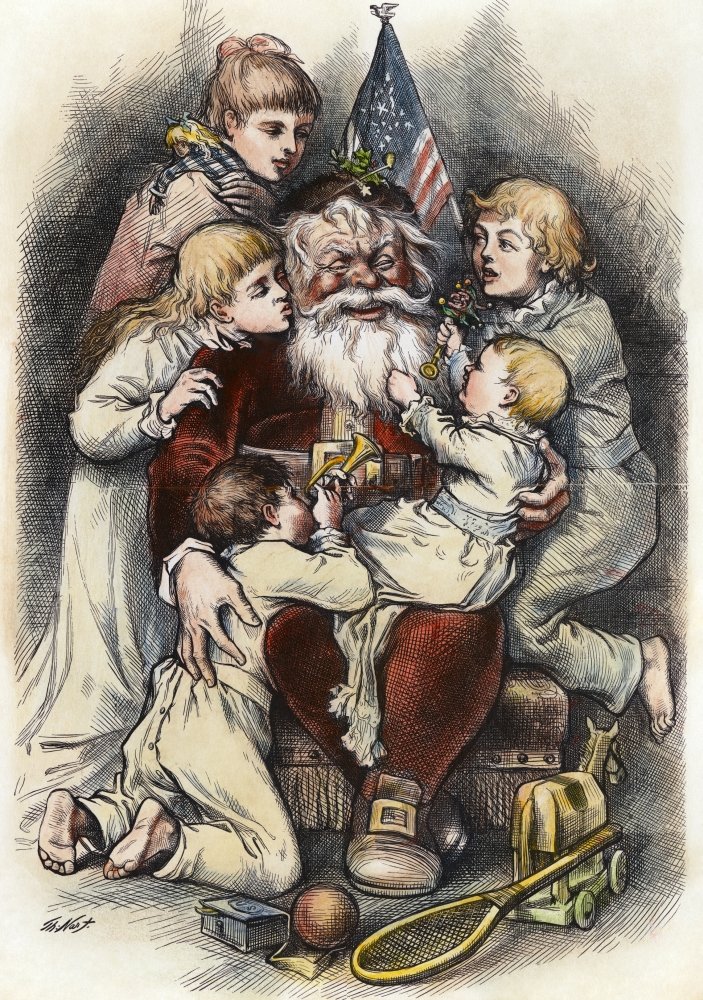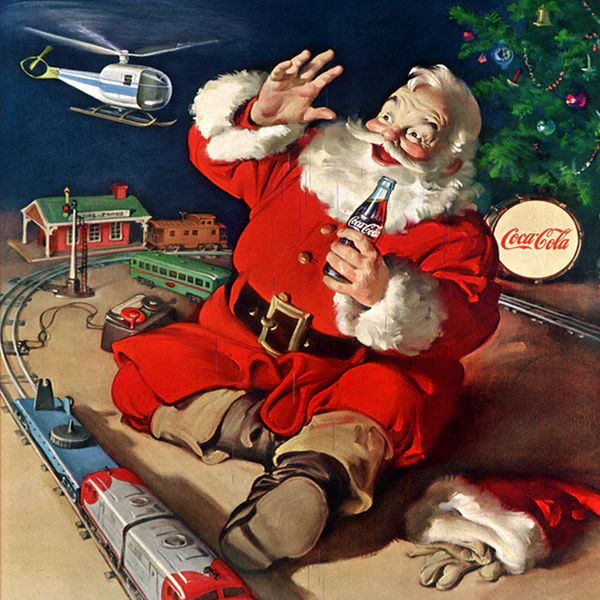Santa Claus began as St. Nicholas in the 3rd century, in Turkey. By the 18th century, he was not only the most popular saint in Europe, going by a variety of names in different countries, but as Sinterklaas he had also reached the New World.
Dutch immigrants in New York celebrated December 6th, the Feast of St. Nicholas, and their name, Sinterklaas, became the American name, Santa Claus.
Washington Irving, author of Rip Van Winkle and The Legend of Sleepy Hollow, popularized the story of Santa Claus in New York. In 1809 he wrote a story of Dutch sailors with Sinterklaas as the figurehead of their ship. The saint told the sailors to settle in Manhattan and promised that he would show up in his flying sleigh every year to bring toys to their children.
The Night before Christmas
In 1822, Clement Clarke Moore wrote a Christmas poem, “An Account of a Visit from St. Nicholas.” Most of us know this poem as “‘Twas The Night Before Christmas.”
This poem is the source of many of the familiar details we now know about Santa Claus, some of which may have come from Washington Irving’s story.
The poem included
…a miniature sleigh and eight tiny rein-deer,With a little old driver so lively and quick,I knew in a moment he must be St. Nick.
Down the chimney St. Nicholas came with a bound.He was dressed all in fur, from his head to his foot,And his clothes were all tarnished with ashes and soot;A bundle of toys he had flung on his back,And he looked like a pedler just opening his pack.His eyes—how they twinkled! his dimples, how merry!His cheeks were like roses, his nose like a cherry!His droll little mouth was drawn up like a bow,And the beard on his chin was as white as the snow;The stump of a pipe he held tight in his teeth,And the smoke, it encircled his head like a wreath;He had a broad face and a little round bellyThat shook when he laughed, like a bowl full of jelly.He was chubby and plump, a right jolly old elf,And I laughed when I saw him, in spite of myself;
60 years later, Thomas Nast illustrated the poem. He gave Santa Claus his red suit and sleigh, and drew many pictures of him over the years.

The other most influential image of Santa Claus is the one Coca-Cola commissioned from artist Haddon Sundblom. This Santa Claus solidified the image of Santa in a red suit — drinking Coke, of course.

Does Santa Automate?
So does Santa use automation? Early images of Santa’s workshop show an assembly line staffed by elves. This makes it clear the Santa Claus is a longtime supporter of automation.
With an enormous database of children including not only their names, addresses, and requests for gifts but also their presence on Naughty or Nice lists and details of their sleep hygiene, Santa must use AI to keep track of all the data and accomplish fulfillment via reindeer and sleigh in a very limited time.
Manufacturing is obviously a major part of Santa’s work throughout the year, with undoubted intensive warehouse and logistics capabilities plus an amazing burst of energy for delivery.
Supernatural elements probably play a role in the final last-mile efforts.
So yes, we assume that automation is a big part of the equation. But there is certainly plenty of proprietary information we’re not savvy to.
Christmas has to include a little bit of magic.
